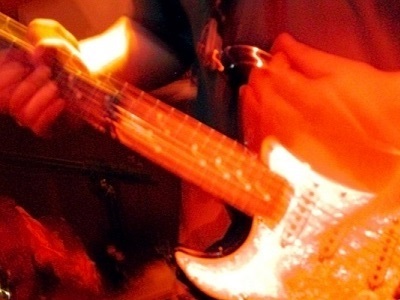Improvising With The C Dorian Scale
 One of the big keys to learning how to improvise on guitar effectively is to develop a solid understanding of the various scales and how they relate to the key in which you’re playing.
One of the big keys to learning how to improvise on guitar effectively is to develop a solid understanding of the various scales and how they relate to the key in which you’re playing.
When you know your way around the scales in your key, you can play any note from these scales and have it sound “right”.
Dorian Mode
Today we’re going to talk about the Dorian mode and specifically the C Dorian scale and how you can use it to improvise in the key of C. Dorian is the second mode of a major scale, is C starts on the second note of the Bb major scale and goes to the 9th.
An easier way to think about it is that a Dorian scale contains the notes of the major scale it’s named for, except with a flat 3rd and a flat 7th. So a C Dorian scale contains the notes C D Eb F G A Bb and then back to C.
Here’s a 2 octave 5th position C Dorian scale.
———————————————5–6–8–
————————————–6–8————-
—————————5–7–8——————–
—————-5–7–8——————————-
—–5–6–8——————————————
–8—————————————————-
The Dorian scale is similar to a natural minor scale, with the exception of the natural 6th, in this case an A as opposed to an Ab. This is what gives the Dorian mode its characteristic sound.
When Do You Use The Dorian Mode?
The Dorian mode has a bit of a melancholic feel to it and works best harmonically when played against minor keys. Since the Dorian mode contains a flat 7th, minor 7th chords are ideally suited for improvising in Dorian mode. The best chords for using C Dorian are Cm7 and Am7. Just about any chord in the key of C minor will work.
The best way to practice improvising using a C Dorian scale is to jam with your friends over 2 or 4 bar sections of Cm7 and Am7. If you don’t have a ready made band to jam with, you can record a backing track yourself or find one on the net.
Some Handy Improvising Tips to Bear In Mind
Here are a few tips to keep in mind as you work on your improvisation skills.
1. It’s important to get the notes of the scale under your fingers and know the pattern you’re using cold. This frees you up from thinking and allows you to go with the flow of the music and allows you to “feel” the song and the solo, rather than thinking your way through it.
2. Less is more. You don’t have to play a million notes for the solo to sound good. Give yourself some space between the notes and once in a while try to play the fewest notes you possibly can while still getting your musical ideas across.
3. Play off the melody. When you’re soloing on guitar, try to expand on the ideas presented in the melody of the song. You don’t want to do this exactly, but play around with the melody and see what you come up with. This helps the solo sound like part of the tune, rather than a musical exercise stuffed into the middle of a song.
4. Think Ahead. Know the chord progression and have a bit of an idea of where you plan to go next. It’s ok to hang on to a particular note or set of notes for a bit while you formulate your plan of attack.
5. Have fun. If you’re enjoying yourself, it will show in the music and your audience will sense and enjoy it as well. Enthusiasm is a great tonic. Don’t obsess over the odd mistake, chances are the audience won’t notice it or will think you did it on purpose. Play with confidence and play for fun. That’s the whole point of music!
A Must-Have Tool For Every Guitarist…
Guitar Pro 6 enables you to see and hear exactly how a piece of music is played. Besides a full-fledged library to help you identify chords and fingerings, you can easily learn new songs from tabs! I highly recommend a copy of the software to people who are serious about learning the guitar.
Click here to download Guitar Pro 6 instantly now…







Leave A Comment